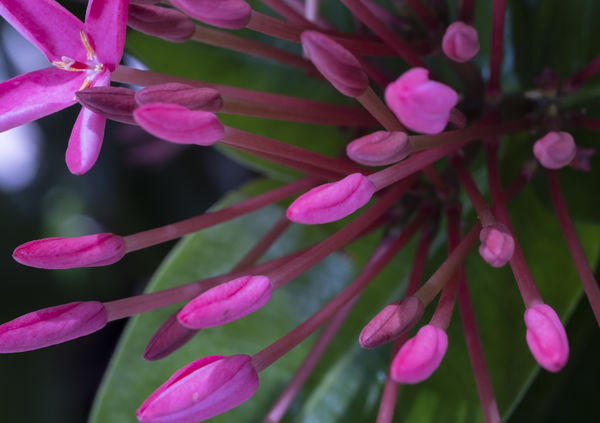Lens for Macro Flora
Sep 26, 2018 09:39:57 #
Aloha, I've been looking into getting a lens for Macro photos. I'm still pretty new to all of this and researching had become a little overwhelming. So I thought I'd ask for personal experience/preference. I do a lot of Macro Flora. Flowers, leaves, and almost anything on a plant. What lens would you recommend? These were all taken with my Canon 80D with the 18-135 mm kit lens. I want to be able to get up close and personal with the flowers.
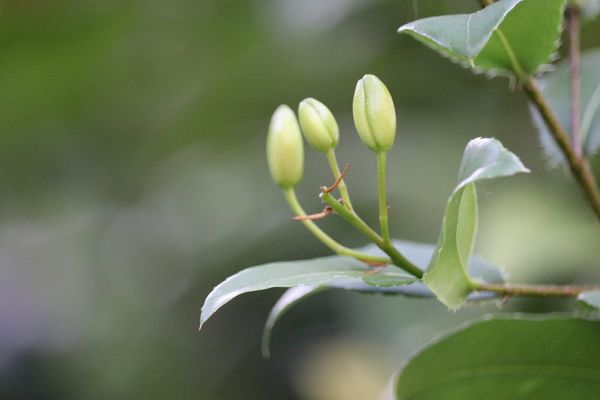
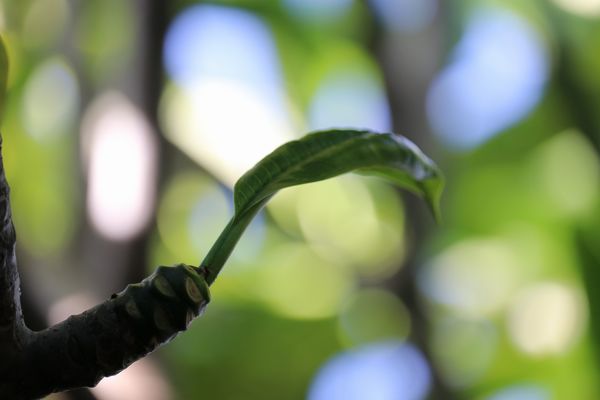
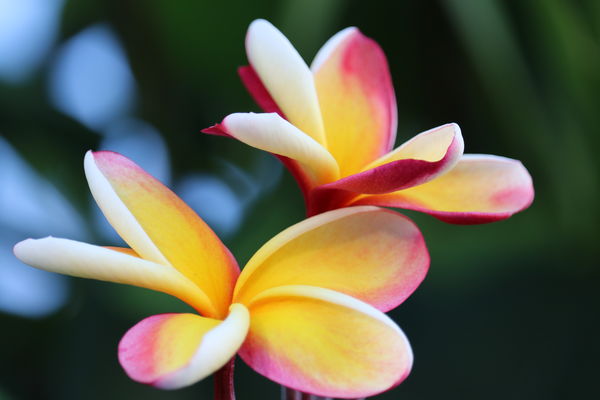
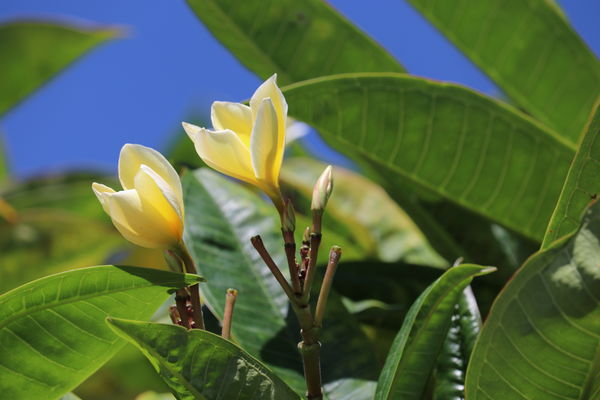
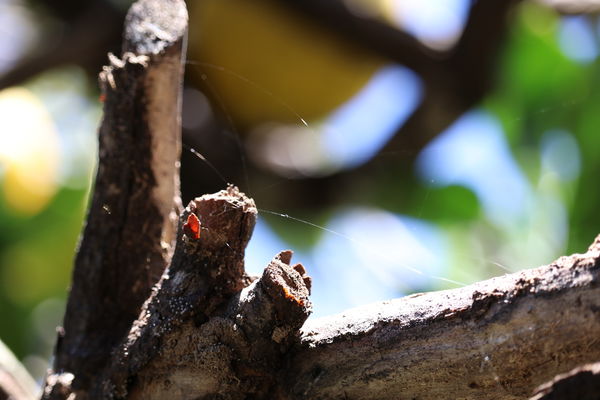
Sep 26, 2018 10:00:01 #
You are doing very well right now, without a macro lens. I have a Nikon 200mm macro where I don't need to be right on top of whatever it is I am shooting because I can focus from a foot or more away. That works well for insects that spook easily and fly orrun away. My 60mm macro also works well but I need to be much closer to my subject. The 105mm is right in the middle and I have it because I can, but it just might be the best for both worlds of macro.
Sep 26, 2018 10:27:30 #
PolkadotDaisy wrote:
Aloha, I've been looking into getting a lens for Macro photos. I'm still pretty new to all of this and researching had become a little overwhelming. So I thought I'd ask for personal experience/preference. I do a lot of Macro Flora. Flowers, leaves, and almost anything on a plant. What lens would you recommend? These were all taken with my Canon 80D with the 18-135 mm kit lens. I want to be able to get up close and personal with the flowers.
Well done Daisy with the lens you are using. I also use the Canon 80D and when it came time for me to delve into the macro world I researched lenses until I was blue in the face. I ultimately settled on the Sigma 105mm f/2.8 OS HSM for a couple of reasons. Optical Stabilization, cost (about half the price of a Canon) and the positive reviews.
https://www.adorama.com/sg10528meos.html
There are some available on the used secondary market as well, which is where I purchased mine. (ebay)
Best of luck and enjoy macro.

Sep 26, 2018 10:35:52 #
I couldn't agree more. Owning a 200mm, 105mm and a 60mm allows for just about any macro shooting opportunity. I took this shot of flower buds while in Mexico last week using the 60mm macro lens on a crop sensor camera. The 60mm is my go-to lens for flowers and setup shots indoors. The 105mm is a great length for general all-around shooting and is likely the most common length +/- used. The 200mm is my hunting insect lens in the field due to its extra distance minimum focus for insects that may sting, bite or that may be skittish.
My advice is to get your flash off the camera and out in from of the lens in some fashion and to diffuse it in some manner as well. Macro lenses are built to a high quality so there are only subtle differences between them (camera mount specific of course). What makes the most dramatic difference is the quality of light used in macro photography for photography is 'painting with light'.
For me, macro photography has been not only highly addictive but it changed my retirement life and the UHH True Macro Community has helped and supported me every step of the way.
Enjoy your passion - Sippyjug.
My advice is to get your flash off the camera and out in from of the lens in some fashion and to diffuse it in some manner as well. Macro lenses are built to a high quality so there are only subtle differences between them (camera mount specific of course). What makes the most dramatic difference is the quality of light used in macro photography for photography is 'painting with light'.
For me, macro photography has been not only highly addictive but it changed my retirement life and the UHH True Macro Community has helped and supported me every step of the way.
Enjoy your passion - Sippyjug.
Sep 26, 2018 10:39:57 #
The images you posted are really just "close up" and not macro. Unless you are going to photograph the innards of flowers or very tiny ones, a macro lens isn't needed. If you do want one, I would think something in the 60mm range would suffice. Now, if you decide to shoot insects, then something longer would be needed. I use a 105mm macro (macro is my niche) and I have no problems getting close without scaring off the insect. Granted, some will skedaddle, but most don't as long as you know about the subjects proclivities. My Flickr stream (link below) has lots of macro images, flowers as well as insects. I use an older manual focus macro lens from the 1980's even though I have 8 choices in macro lenses from 55 to 180mm in length and MF & AF iterations. Find a link below to my "Flower" album... Note, some of these flowers are very small
https://www.flickr.com/photos/screaminscott/albums/72157594388593116
https://www.flickr.com/photos/screaminscott/albums/72157594388593116
Sep 26, 2018 10:41:33 #
I also am a Canon user and recently purchased the Sigma 105 f/2.8 OS HSM-really, really nice lens and also cost played a big factor in my decision. I'm very happy with it and highly recommend it. You could always try renting first to see if you will like using it. I'm still pretty new to macro, but it's quickly becoming one of my favorite len's to use and objects to shoot. It's a great lens  I've also heard it makes a nice portrait lens, haven't tried that yet
I've also heard it makes a nice portrait lens, haven't tried that yet 
 I've also heard it makes a nice portrait lens, haven't tried that yet
I've also heard it makes a nice portrait lens, haven't tried that yet 
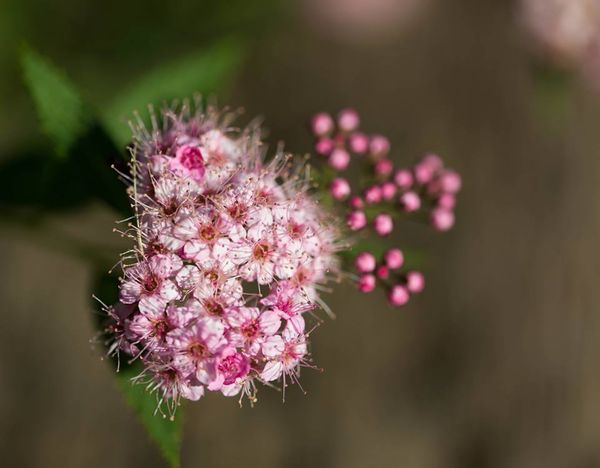
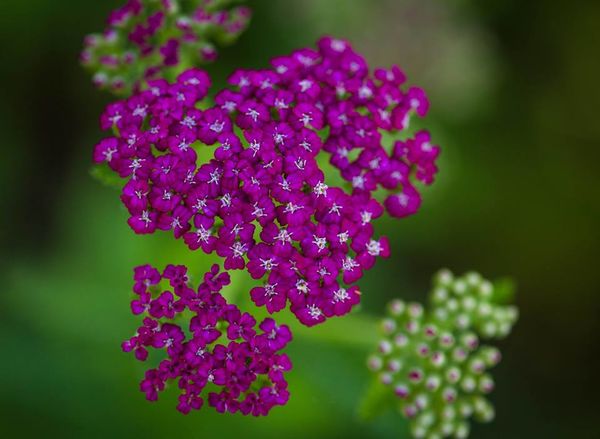
Sep 26, 2018 10:51:18 #
Sep 26, 2018 10:59:09 #
Consider a Tokina 100mm. No image stabilization, but otherwise a great lens at an affordable price. IS is not very useful for macro, anyway.
Sep 26, 2018 11:19:36 #
cactuspic
Loc: Dallas, TX
I shoot primarily plants, macros and closeups. You can check my website: IrwinLightstone.com to check my work. I shoot a full frame camera with the following macros, 15mm, 50mm, 60mm, 70mm, 100mm, 150mm 180mm. All of these macros get to 1:1 magnification (which means the image on the sensor is the same size as the subject). I also shoot several lenses for magnifications greater than life size, as well as a number of older, classic manual focus macros. Here are my observations.
1. For an occasional closeup, zoom lenses (with or without extension tubes or supplemental closeup lens) work well. If you use a close up lens, get the good closeup lens rather than the cheap sets that have significant lens aberrations. Although you can get good, even publishable result with tubes and closeup lenses, noticibly better results can be had with a macro. They are less clunky to use and are flat out sharper at macro magnifications. A macro can be addictive.
I choose which macro to use by considering three factors. First, I consider my field of view. Do I want a wider field of view to put the subject in context or do I want a narrow field of view to eliminate distracting backgrounds. A longer focal length has greater ability to blur the background and to exclude distracting background elements. Second, I look at my lighting and the magnification. For the same magnification, you will be substantially closer with a 50mm macro than with a 180mm. While this may not impact a botanical closeup;with a 50mm at 1:1, you may so close that you shade the plant or scare a bug. Where available, I choose a the macro lens with a tripod mount as I am usually on a tripod and want to keep the load centered on the tripod as opposed to awkwardly hanging off to one side. I chose my Canon 100 macro over competing brands in that focal range because it had a tripod mount.
When choosing a focal length for your first macro lens, I recommend one in the 90-105mm range as a versatile performer. It gives you a decent working distance, in a lens that is not too heavy or expensive. Longer macro lenses tend to be more expensive, bigger and heavier. My 180mm macro is my most used, followed by my 100mm. A good compromise between a 90-105mm macros and the 180-200mm macros is the Sigma 150mm.
Good luck with your explorations. You might also check both the closeups and macro forums.
1. For an occasional closeup, zoom lenses (with or without extension tubes or supplemental closeup lens) work well. If you use a close up lens, get the good closeup lens rather than the cheap sets that have significant lens aberrations. Although you can get good, even publishable result with tubes and closeup lenses, noticibly better results can be had with a macro. They are less clunky to use and are flat out sharper at macro magnifications. A macro can be addictive.
I choose which macro to use by considering three factors. First, I consider my field of view. Do I want a wider field of view to put the subject in context or do I want a narrow field of view to eliminate distracting backgrounds. A longer focal length has greater ability to blur the background and to exclude distracting background elements. Second, I look at my lighting and the magnification. For the same magnification, you will be substantially closer with a 50mm macro than with a 180mm. While this may not impact a botanical closeup;with a 50mm at 1:1, you may so close that you shade the plant or scare a bug. Where available, I choose a the macro lens with a tripod mount as I am usually on a tripod and want to keep the load centered on the tripod as opposed to awkwardly hanging off to one side. I chose my Canon 100 macro over competing brands in that focal range because it had a tripod mount.
When choosing a focal length for your first macro lens, I recommend one in the 90-105mm range as a versatile performer. It gives you a decent working distance, in a lens that is not too heavy or expensive. Longer macro lenses tend to be more expensive, bigger and heavier. My 180mm macro is my most used, followed by my 100mm. A good compromise between a 90-105mm macros and the 180-200mm macros is the Sigma 150mm.
Good luck with your explorations. You might also check both the closeups and macro forums.
Sep 26, 2018 11:23:59 #
Nice website & images. That said, it does look like you focus stack, no? My images are mostly of insects and I seldom use a tripod as the insects have usually moved on by the time it gets set up. Almost all of my images are handheld.
cactuspic wrote:
I shoot primarily plants, macros and closeups. Yo... (show quote)
Sep 26, 2018 11:35:58 #
cactuspic
Loc: Dallas, TX
Thanks Scott. I do a bunch of focus stacking. It used to frustrate me when I tried to stop down get extended focus on my cacti, only to find that I could not stop down far enough to keep all of the plant in focus. And then there’s diffraction. I know the limitations of stacking make it impossible to capture your insects in flight, but it’s such a fantastic technique for stationary subjects. When I shoot insect, they are often(probably usually) handheld.
Sep 26, 2018 11:40:49 #
What software do you use? I'm thinking of going with Helicon...
cactuspic wrote:
Thanks Scott. I do a bunch of focus stacking. It used to frustrate me when I tried to stop down get extended focus on my cacti, only to find that I could not stop down far enough to keep all of the plant in focus. And then there’s diffraction. I know the limitations of stacking make it impossible to capture your insects in flight, but it’s such a fantastic technique for stationary subjects. When I shoot insect, they are often(probably usually) handheld.
Sep 26, 2018 11:57:19 #
cactuspic
Loc: Dallas, TX
Scott, I prefer Zerene, primarily because of the retouching capability. Helicon is faster and outputs a DNG image if desired. But since the are sometime artifacts such as halos or two items in focus in the same space (such as cactus spines coming through the flower instead of being invisible) I find the editing function essential. I have not been able to edit as effectively in Helicon, although that may be on me and my limited understanding of the software.
Sep 26, 2018 13:21:20 #
amfoto1
Loc: San Jose, Calif. USA
Hi,
Like several other responses, I recommend a macro lens in the 90mm, 100mm, 105mm range of focal lengths. This is a good compromise of size, hand "holdability" and working distance from your subjects.
Frankly, a lot of flower & plant photography is done at far less magnification than the 1:1 that most macro lenses are capable of doing. As a result, a more compact lens like a 60mm might be workable, too... it will put you closer to the subject, but if not at full magnification you'd still have ample working distance.
The "cheap" way to "do macro" would be to get some macro extension tubes and use those with your 18-135mm. Those tubes go between the lens and camera, forcing the lens to be able to focus closer. I recommend the Kenko tube set (12mm, 20mm & 36mm)... good quality at a reasonable price. Macro tubes have no optics in them, so they generally don't degrade image quality. The more extension you use, the close the lens will be able to focus.... Corollary to that, the longer your lens' focal length, the more extension you'll need to significantly change it's close focusing ability and increase magnification.
I've got Canon and Kenko macro extension tubes.... always have several with me in case I need them. They are relatively small, lightweight and easy to use with only a little practice. They can even be used with macro lenses, to push them beyond their native level of magnification (usually 1:1 or "life size"... which means on an 80D you can photograph an area the size of the sensor, which is approx. 15x22mm).
Your camera usually is sold in kit with the EF-S 18-135mm IS USM or EF-S 18-135mm IS STM lens... which are pretty darned close focusing for a non-macro lens (those lenses are identical optically... the only difference is their focus drive motor.... the newer and more expensive USM version is faster focusing and better tracking movement). They can do 0.28X magnification... or nearly 1:3 (1/3 life size), on their own.
A "true" macro lens will generally give higher magnification and most of them have extremely high image quality. Macro lenses typically are "flat field designs"... meaning that up close they are sharp from corner to corner and evenly illuminated across the entire image area (a non-macro, non-flat field lens such as your 18-135mm can "go soft" in the corners and have some vignetting when made to focus very close, especially when used with extension tubes to push it beyond it's native close focusing ability).
If you have your heart set on a "true" macro lens, there are a number to choose among.... all capable of making high quality images. It's more those lenses' other features that set them apart from each other. And you generally "get what you pay for". In the focal length range recommended, you can choose among:
- Canon EF 100mm f/2.8L IS USM.... $900... very high build quality and very full featured. One of only two that can optionally be fitted with a tripod mounting ring (which is quite useful for a lot of macro work, Canon Tripod Ring D... $172).
- Tamron SP 90mm f/2.8 VC USD... $650... the latest in a long, series of well respected macro lenses from this manufacturer, quite full featured.
- Canon EF 100mm f/2.8 USM... $600 + $35 lens hood... An older design without image stabilization, but otherwise largely equal to the capability & qualities of the newer design. This is the only other lens in this range that can optionally be fitted with a tripod mounting ring (Canon Tripod Ring B... $150).
- Sigma 105mm f/2.8 OS HSM... $550... top of the line from Sigma, great reputation and quality.
- Rokinon 100mm f/2.8, Samyang 100mm f/2.8... $500, $450... Same lens selling under different names. Both are manual focus only (some macro work is more easily done manual focus). Also manual aperture control.
- Tamron SP 90mm f/2.8... $500... An earlier design of the Tammy, without VC (stabilization) or USD (ultrasonic focus drive) and not IF (internal focusing).
- Tokina AT-X 100mm f/2.8... $350... A very capable, but simpler lens. Not IF, slower micro motor AF, no stabilization, "focus clutch" req'd to shift between AF and MF.
Some more compact, shorter focal length lenses which risk putting you too close to subjects at full 1:1 (but that high magnification may not be necessary for most flower/flora photography):
- Tamron SP 60mm f/2 Di II... $525... One of few macro lenses with large than f/2.8 aperture, which may make it more useful for some other purposes (portraiture, lower light). IF design. Slower micro motor focus drive. Crop sensor only design.
- Canon EF-S 60mm f/2.8 USM... $400 + $27 for lens hood... One of the most compact. Faster ultrasonic focus drive. Crop sensor only design.
Some other possibilities....
- Sigma 70mm f/2.8 "Art"... $569... A recently introduced updated version of a lens they've offered for some time.
- Venus Laowa 60mm f/2.8 2:1... $400... An exceptionally high magnification, manual focus only, manual aperture lens.
Not recommended for first time macro users or only macro lens...
- Canon MP-E 65mm f/2.8... This is an ultra high magnification (up to 5X life size.... and no less than 1:1), manual focus only lens. Due to the ultra high mag, this is pretty much a tripod-only lens and
- Macro lenses 50mm and shorter focal lengths... too close to subject.
- Macro lenses 150mm and longer... More specialized and difficult to hold steady, smaller aperture needed to offset shallower depth of field.
Regarding some of the features mentioned and you should look for on lenses:
All macro lenses with autofocus tend to be slower focusing than non-macro lenses. In part, that's because they have to move their focusing elements a long, long way to go from infinity to 1:1 magnification. But it's also by design... Slower "long throw" focus designs are used to emphasize accuracy, over speed. This is because depth of field becomes quite shallow at high magnifications.
Some macro lenses have features to help a bit with AF speed. Lenses that use ultrasonic focus drive (Canon USM, Sigma HSM, Tamron USD) are faster focusing and possibly quieter focusing than lenses using micro motor focus drive. A "focus limiter" is another feature on many macro lenses, which can help with focus speed. Just as it sounds, this is used to limit the lens to working within a certain range of it distances, there-by helping it work faster. You will find simpler two-stage focus limiters on some lenses, more advanced three-stage on others.
Ultrasonic focus drive lenses also allow "full time manual override".... meaning that you can fine tune focus manually any time you wish. It's not necessary to turn off the AF system first. This is not the case with micro motor focus drive lenses. They must be manually turned off first. Tokina lenses use an unusual way of doing this, which they call their "focus clutch" mechanism. The lens' focus ring slides slightly forward and backward to switch back and forth between AF and MF. When it's set to AF, turning the focus ring won't do anything. To manually focus the lens must be switched to MF setting (this serves to protect the AF system from possible damage).
"Internal focusing" (or "IF") is another feature you will find on some macro lenses... usually the more expensive ones. This means the lens doesn't grow longer when focused closer. Non-IF macro lenses can nearly double in length when focused to their highest magnification, but may be more compact when set to infinity focus. IF lenses start out larger, but don't change in length even at their highest mag. You never notice it when using them, but IF lenses actually change focal length slightly.... for example, at full 1:1 Canon's two 100mm lenses' "true" focal length is closer to 70mm, when measured in a lab.
Most Canon macro lenses are able to directly use Canon macro flash. The EF 100mm f/2.8 USM, EF-S 60mm f/2.8 and MP-E 65mm all have a built-in feature to directly mount the MR-14EX Ring Lite & MT-24EX Twin Lite flashes. There are adapters sold separately to allow the flash to mount to the EF 100mm f/2.8L IS USM and the EF 180mm f/3.5L USM, and it may be possible to similarly adapt a third party lens. There are also alternative mounting methods both for third party and the Canon macro flash.
Both the Canon 100mm macro lenses are unique in that they can optionally be fitted with a very useful tripod mounting ring, at some additional cost. I've cited the cost of the Canon brand ring, which is top quality in both cases... there are cheaper third party tripod rings available (quality unknown, but I'd avoid really cheap plastic ones). In or close to this focal length, no macro lenses from other manufacturers include or can optionally be fitted with tripod rings. Only the two Canon 100s offer this feature.
Two of the above mentioned Canon macro lenses do not come with their matched lens hoods included. I've cited the price to separately purchase the good quality Canon brand hoods, but there are also less expensive third party clones available.
Like several other responses, I recommend a macro lens in the 90mm, 100mm, 105mm range of focal lengths. This is a good compromise of size, hand "holdability" and working distance from your subjects.
Frankly, a lot of flower & plant photography is done at far less magnification than the 1:1 that most macro lenses are capable of doing. As a result, a more compact lens like a 60mm might be workable, too... it will put you closer to the subject, but if not at full magnification you'd still have ample working distance.
The "cheap" way to "do macro" would be to get some macro extension tubes and use those with your 18-135mm. Those tubes go between the lens and camera, forcing the lens to be able to focus closer. I recommend the Kenko tube set (12mm, 20mm & 36mm)... good quality at a reasonable price. Macro tubes have no optics in them, so they generally don't degrade image quality. The more extension you use, the close the lens will be able to focus.... Corollary to that, the longer your lens' focal length, the more extension you'll need to significantly change it's close focusing ability and increase magnification.
I've got Canon and Kenko macro extension tubes.... always have several with me in case I need them. They are relatively small, lightweight and easy to use with only a little practice. They can even be used with macro lenses, to push them beyond their native level of magnification (usually 1:1 or "life size"... which means on an 80D you can photograph an area the size of the sensor, which is approx. 15x22mm).
Your camera usually is sold in kit with the EF-S 18-135mm IS USM or EF-S 18-135mm IS STM lens... which are pretty darned close focusing for a non-macro lens (those lenses are identical optically... the only difference is their focus drive motor.... the newer and more expensive USM version is faster focusing and better tracking movement). They can do 0.28X magnification... or nearly 1:3 (1/3 life size), on their own.
A "true" macro lens will generally give higher magnification and most of them have extremely high image quality. Macro lenses typically are "flat field designs"... meaning that up close they are sharp from corner to corner and evenly illuminated across the entire image area (a non-macro, non-flat field lens such as your 18-135mm can "go soft" in the corners and have some vignetting when made to focus very close, especially when used with extension tubes to push it beyond it's native close focusing ability).
If you have your heart set on a "true" macro lens, there are a number to choose among.... all capable of making high quality images. It's more those lenses' other features that set them apart from each other. And you generally "get what you pay for". In the focal length range recommended, you can choose among:
- Canon EF 100mm f/2.8L IS USM.... $900... very high build quality and very full featured. One of only two that can optionally be fitted with a tripod mounting ring (which is quite useful for a lot of macro work, Canon Tripod Ring D... $172).
- Tamron SP 90mm f/2.8 VC USD... $650... the latest in a long, series of well respected macro lenses from this manufacturer, quite full featured.
- Canon EF 100mm f/2.8 USM... $600 + $35 lens hood... An older design without image stabilization, but otherwise largely equal to the capability & qualities of the newer design. This is the only other lens in this range that can optionally be fitted with a tripod mounting ring (Canon Tripod Ring B... $150).
- Sigma 105mm f/2.8 OS HSM... $550... top of the line from Sigma, great reputation and quality.
- Rokinon 100mm f/2.8, Samyang 100mm f/2.8... $500, $450... Same lens selling under different names. Both are manual focus only (some macro work is more easily done manual focus). Also manual aperture control.
- Tamron SP 90mm f/2.8... $500... An earlier design of the Tammy, without VC (stabilization) or USD (ultrasonic focus drive) and not IF (internal focusing).
- Tokina AT-X 100mm f/2.8... $350... A very capable, but simpler lens. Not IF, slower micro motor AF, no stabilization, "focus clutch" req'd to shift between AF and MF.
Some more compact, shorter focal length lenses which risk putting you too close to subjects at full 1:1 (but that high magnification may not be necessary for most flower/flora photography):
- Tamron SP 60mm f/2 Di II... $525... One of few macro lenses with large than f/2.8 aperture, which may make it more useful for some other purposes (portraiture, lower light). IF design. Slower micro motor focus drive. Crop sensor only design.
- Canon EF-S 60mm f/2.8 USM... $400 + $27 for lens hood... One of the most compact. Faster ultrasonic focus drive. Crop sensor only design.
Some other possibilities....
- Sigma 70mm f/2.8 "Art"... $569... A recently introduced updated version of a lens they've offered for some time.
- Venus Laowa 60mm f/2.8 2:1... $400... An exceptionally high magnification, manual focus only, manual aperture lens.
Not recommended for first time macro users or only macro lens...
- Canon MP-E 65mm f/2.8... This is an ultra high magnification (up to 5X life size.... and no less than 1:1), manual focus only lens. Due to the ultra high mag, this is pretty much a tripod-only lens and
- Macro lenses 50mm and shorter focal lengths... too close to subject.
- Macro lenses 150mm and longer... More specialized and difficult to hold steady, smaller aperture needed to offset shallower depth of field.
Regarding some of the features mentioned and you should look for on lenses:
All macro lenses with autofocus tend to be slower focusing than non-macro lenses. In part, that's because they have to move their focusing elements a long, long way to go from infinity to 1:1 magnification. But it's also by design... Slower "long throw" focus designs are used to emphasize accuracy, over speed. This is because depth of field becomes quite shallow at high magnifications.
Some macro lenses have features to help a bit with AF speed. Lenses that use ultrasonic focus drive (Canon USM, Sigma HSM, Tamron USD) are faster focusing and possibly quieter focusing than lenses using micro motor focus drive. A "focus limiter" is another feature on many macro lenses, which can help with focus speed. Just as it sounds, this is used to limit the lens to working within a certain range of it distances, there-by helping it work faster. You will find simpler two-stage focus limiters on some lenses, more advanced three-stage on others.
Ultrasonic focus drive lenses also allow "full time manual override".... meaning that you can fine tune focus manually any time you wish. It's not necessary to turn off the AF system first. This is not the case with micro motor focus drive lenses. They must be manually turned off first. Tokina lenses use an unusual way of doing this, which they call their "focus clutch" mechanism. The lens' focus ring slides slightly forward and backward to switch back and forth between AF and MF. When it's set to AF, turning the focus ring won't do anything. To manually focus the lens must be switched to MF setting (this serves to protect the AF system from possible damage).
"Internal focusing" (or "IF") is another feature you will find on some macro lenses... usually the more expensive ones. This means the lens doesn't grow longer when focused closer. Non-IF macro lenses can nearly double in length when focused to their highest magnification, but may be more compact when set to infinity focus. IF lenses start out larger, but don't change in length even at their highest mag. You never notice it when using them, but IF lenses actually change focal length slightly.... for example, at full 1:1 Canon's two 100mm lenses' "true" focal length is closer to 70mm, when measured in a lab.
Most Canon macro lenses are able to directly use Canon macro flash. The EF 100mm f/2.8 USM, EF-S 60mm f/2.8 and MP-E 65mm all have a built-in feature to directly mount the MR-14EX Ring Lite & MT-24EX Twin Lite flashes. There are adapters sold separately to allow the flash to mount to the EF 100mm f/2.8L IS USM and the EF 180mm f/3.5L USM, and it may be possible to similarly adapt a third party lens. There are also alternative mounting methods both for third party and the Canon macro flash.
Both the Canon 100mm macro lenses are unique in that they can optionally be fitted with a very useful tripod mounting ring, at some additional cost. I've cited the cost of the Canon brand ring, which is top quality in both cases... there are cheaper third party tripod rings available (quality unknown, but I'd avoid really cheap plastic ones). In or close to this focal length, no macro lenses from other manufacturers include or can optionally be fitted with tripod rings. Only the two Canon 100s offer this feature.
Two of the above mentioned Canon macro lenses do not come with their matched lens hoods included. I've cited the price to separately purchase the good quality Canon brand hoods, but there are also less expensive third party clones available.
Sep 26, 2018 13:40:13 #
Screamin Scott wrote:
The images you posted are really just "close ... (show quote)
Well that's the thing, with what I got, I've only be able to get close up. Been trying to get that macro shot, but even on manual focus I fail. I still have lots of practice to do but I know the right tools help.
If you want to reply, then register here. Registration is free and your account is created instantly, so you can post right away.




